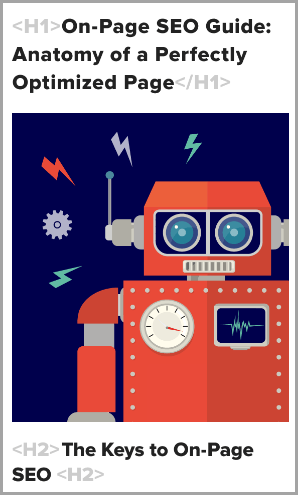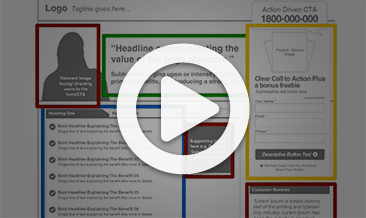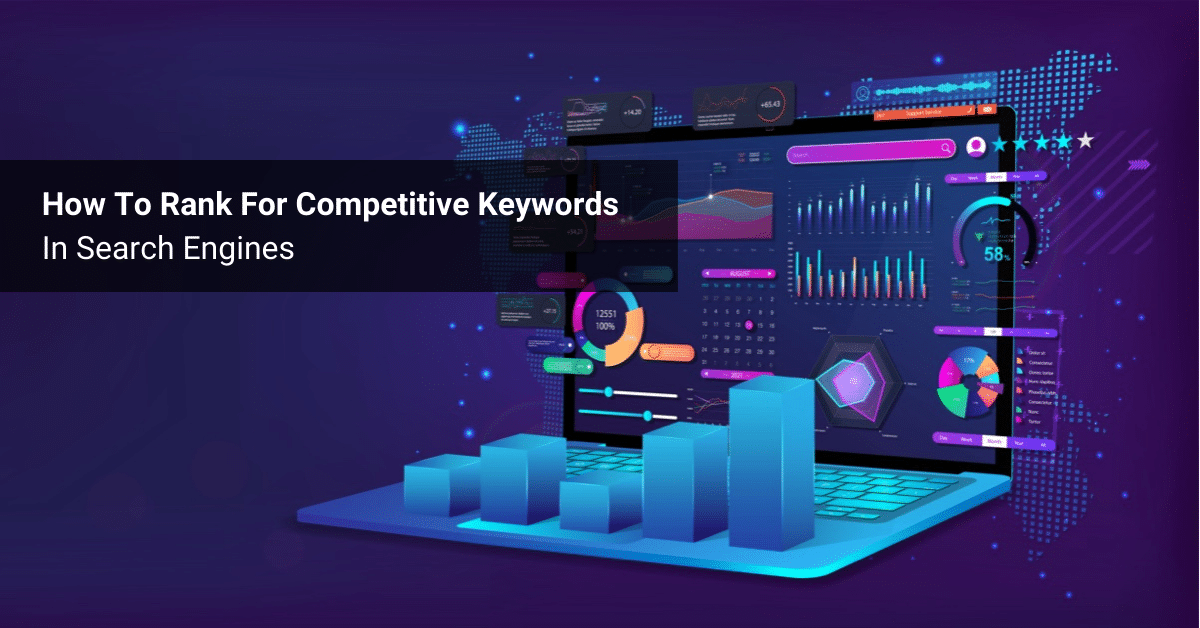
How important is website traffic to your business?
If you rely on web traffic for lead generation to grow your business, then SEO needs to be on your radar.
Paid ads are a great way to generate quick wins, but if you can optimise your site for search engines it’s like the gift that keeps on giving. The traffic comes in day after day even when you’re not doing anything extra, OR paying for it.
Given the age of the internet and the considerable amount of websites competing for the same search engine traffic, SEO is much harder than it used to be. Especially when it comes to ranking for competitive keywords in your industry.
But if you CAN rank for competitive keywords, your business offer can get in front of your target market consistently and sustainably.
So how do you rank for competitive keywords?
The problem is that there are established brands with HUGE marketing budgets that already have the top spots filled, and they aren’t going to give them up without a fight.
Sure they might own the real estate for now, but using the proper strategy and tools can help you beat the competition.
Let’s take a closer look at how.
Check If It Is Even Possible
Start your SEO journey by creating a list of potential keywords you would like to get search engine traffic for.
When creating the list, try to choose long-tail keywords that are four words or longer instead of broad-based terms that are likely to be EXTREMELY competitive already.
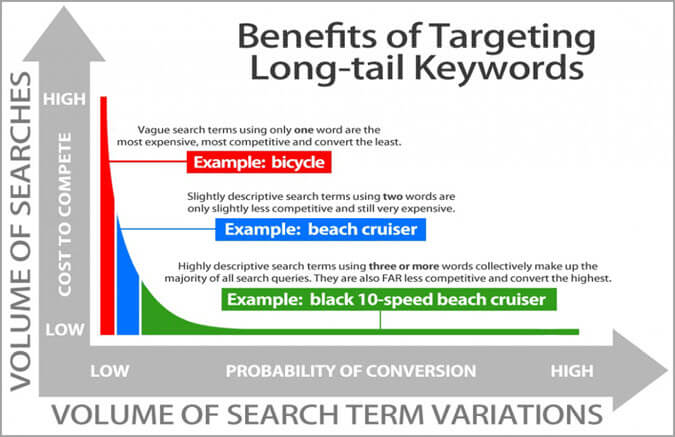
These keywords have less competition, and they attract highly qualified customers because it is more obvious what their INTENT is when they are searching.
If you want to use shorter keywords, you can, but it will take more time to find words that you can rank for.
When you have your list ready, go to Google and type them into the search engine. Google is your most important research tool, since it controls 65% of the search market share.
If the results contain a lot of URLs with .GOV and .EDU extensions, disregard that keyword since you most likely can’t compete with these high-authority sites.
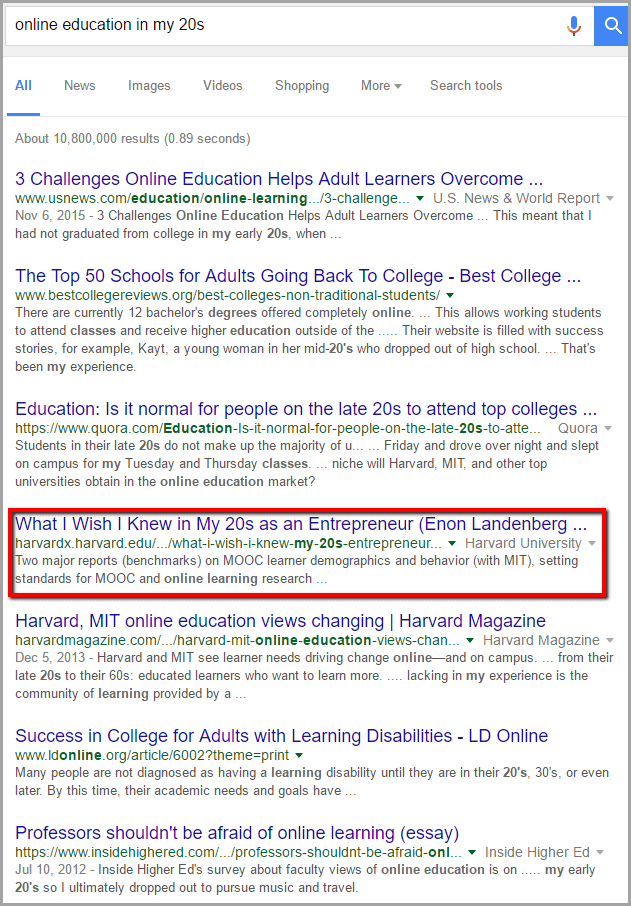
Sites with .COM extensions might also have high domain authority rankings, but use a tool such as Open Site Explorer to check the domain authority for each site in the results. This will give you an indication of whether or not you will be able to play with the big boys or not.
Inside Open Site Explorer you should start by checking your site’s own domain authority to see how you compare:

Then, put the first competitor’s domain name into the box. If you have a better authority score, you are one step closer to outranking that competitor for the keyword you have chosen.

Google also uses domain age when determining page ranking. To figure that out, go to the WHOIS database to check each site’s domain age:
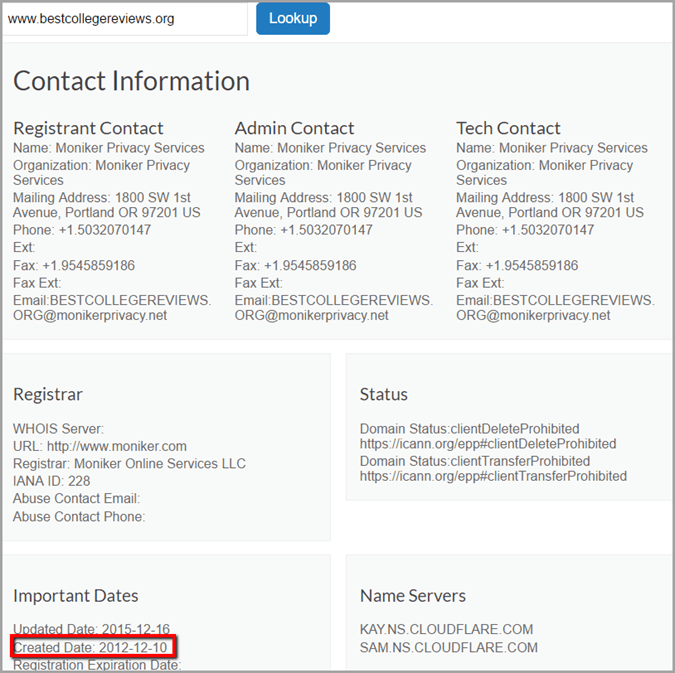
If your domain loses in regards to age and authority, you will need to put a lot of time and money into ranking. So it may not be worth your effort.
Instead, you could use the Moz Pro Keyword Explorer and SERP Analysis Tool to find long-tail keywords that are easier to rank for. Simply type your desired phrase into the tool and then click “See Full Analysis” under “SERP Analysis”, and it will generate some potentially valuable keyword alternatives for you.

In this search:
- The “Volume” refers to the number of people who search for a keyword on average every month
- The “Difficulty Score” shows how difficult it is to rank for the keyword. The closer the score is to 100, the harder it will be to rank for
- The “Opportunity Score” illustrates the click-through-rate potential for organic results. If people typically buy ads for this keyword the opportunity will be lower, because it means you are competing against ad clicks as well
- The “Potential Score” is a combination of the metrics. If you find a key phrase with a high “Potential Score,” you can likely rank for it
Uncover How Many Backlinks You Need
Google puts a significant emphasis on backlinks when ranking your pages in their searches.
Put simply, “backlinks” are literally as they sound – someone has hyperlinked from their website back to yours. It’s seen as a signal of quality in the Google algorithm.
It’s not a black-and-white comparison, but if you have more quality links than the other pages trying to rank for a certain search term, then it is highly likely that you will outrank them.
“Quality” is a very important term here though. You are better off having a select few credible domains linking back to your website, rather than a hundred low-quality spammy websites.
To analyse how many links you will need to rank for a certain term, go to the Domain Comparison feature in AHREFS software.
Put your domain name in the first box and the domain names of your top four competitors in the next four boxes.
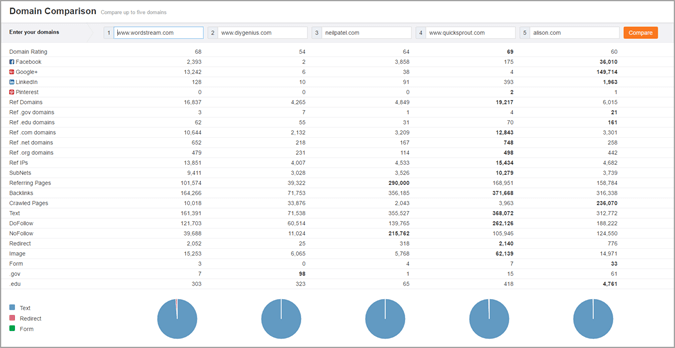
This shows how many links you need from each referrer in order to move past your competition.
While many of the links are .COM, the top sites also have .EDU and .GOV links. These are the real momentum-shifters when it comes to ranking your site for competitive keywords. Of course these links are significantly more difficult to get than .COM links are, which makes them much more valuable.
Write Long-Form Content
According to this study, websites in the top ten of Google’s search results have an average content length of over 2,000 words.
Sites that rank number one have an average content length of 2,416 words, and sites that come in tenth have an average word count of 2,032. This shows that there is a slight drop in page rank as the word count reduces.
Longer content (if interesting and engaging) tends to attract more backlinks and it helps position yourself as an authority. It also gives you additional opportunities to rank for long-tail keywords and increases the amount of time people spend on your website, which is another factor Google takes into account when ranking content.
Regardless of your domain age or your authority ranking, you can reap the benefits of long-form content by creating something that is 10x better than anything else already out there on a topic. This will help you stand out, not only to Google but also to your customers.
Try to include stories, visuals and a variety of media in your long-form content. You need to engage readers for a long period and ideally make them want to check out other pages on your site.
The goal with long-form content is that your readers will have everything they need from that topic when they finish reading, and won’t need to look elsewhere.
Do On-Page SEO
“On-Page SEO” is essentially anything on your web page that you can influence, optimise or edit in order to better align with Google’s ranking factors.
There are various components to on-page SEO, and each component plays a role in helping your site move up in the search rankings.
Let’s take a look at some of the on-page factors that are most important when trying to rank for competitive keywords.
Page Loading Speed
Google announced speed as a ranking factor in 2010, and has used it as a mobile ranking factor since 2016.
A content delivery network (CDN) is an easy way to speed up your website. It cuts down on the space between visitors and the server by storing cached versions of the site in various locations.
It looks a little something like this:
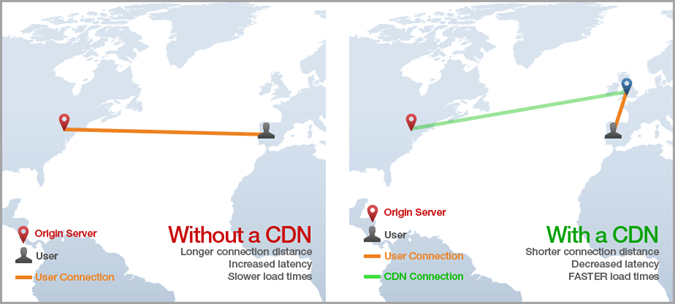
When someone accesses the site, the server that’s closest to the user provides the information, allowing the site to load much faster.
If you want your site to be fast, don’t make the mistake of using large images and scaling them down, as the website still reads them as large images. If you take an image that is 2000 x 2000 pixels and use CSS to scale it to 200 x 200 pixels, browsers will still view it as 2000 x 2000 pixels.
Instead, scale your images to their appropriate size and use TinyPNG to compress them. TinyPNG reduces the size of images without reducing the quality so your site will load faster without losing its visual appeal.

Another thing you can do to improve site speed is to reduce your HTTP requests down to 10-30 files per page. That is a big reduction from the 99 requests per page that website owners average. (Of course this one requires a bit more technical know-how so you may want to enlist an agency or web expert to help out)
User Experience
Google closely looks at user experience when determining rankings, so design your site in a way that minimises the bounce rate. (The time it takes for a visitor to land on your page and leave again)
For example, long-form, highly readable content that is 2,000 or more words keeps people on your site longer.
Your text’s readability score should be around an eighth grade level so everyone can read it with ease. Check the readability score with the Hemingway Editor.
Multimedia also engages users and keeps them on your site, so try to integrate videos on your pages to increase interaction. But be sure to test your multimedia, since it can also increase bounce rate if it takes a long time to load.
Navigation and Design
Make use of whitespace. Visitors who get overwhelmed with text and options tend to leave a website.
They also leave if they can’t navigate the site. Follow the three-click rule. People should be able to find what they want within three clicks.
On-Site Engagement
Getting visitors to share your web pages on social media increases your site engagement and tells Google that people care about what you have to offer.
Include social sharing cues on your website such as calls-to-action, images and embedded social buttons using tools like Shareaholic.

Other On-Page Factors
- Mobile friendly web design is a ranking factor, so you need to create a responsive website or build a mobile version of your current site.
- Every page on your site should include 2-3 internal links to other important pages on your site
- External links from your pages out to other authority sites also helps
- Create a short, easy to understand URL for every page on your site. Google pays attention to the first 3-5 words of the URL so include your keywords here if possible
- Use H1 and H2 header tags on your pages, and include your keywords in these headings if possible
Source: Backlinko
- Optimise your images for SEO by using an Alt tag that consists of your keyword and a description of the image
- Include your keyword in the first 100 words of your blog post. If you have a less valuable keyword, put it in the second paragraph
- Write a meta description that encourages action and includes your keywords. Consider the user intent and write the description accordingly
Start Link Building
Once your site is optimised for SEO, you need to get quality backlinks pointing to it. This is known as link building.
Start the process by submitting your site to directories. Before you submit to a directory, check its authority and rank in Moz’s Open Site Explorer.
Go to the explorer, type in the name of the directory, and click “Compare Link Metrics”:

Look at the page authority, Page MozRank, and Page MozTrust scores before moving forward.
In general, most directories won’t have perfect authority, rank, and trust ratings. Choose directories that are above the middle of the pack to benefit from the links.
In the example above, the link has a Page Authority of 80 and Page MozRank and Page MozTrust scores over 6. This would provide a quality link for a free directory.
Consider paid directories such as Business.com as well. Paid directories provide no-follow links that help with exposure and reputation building, which in turn can get you more links.
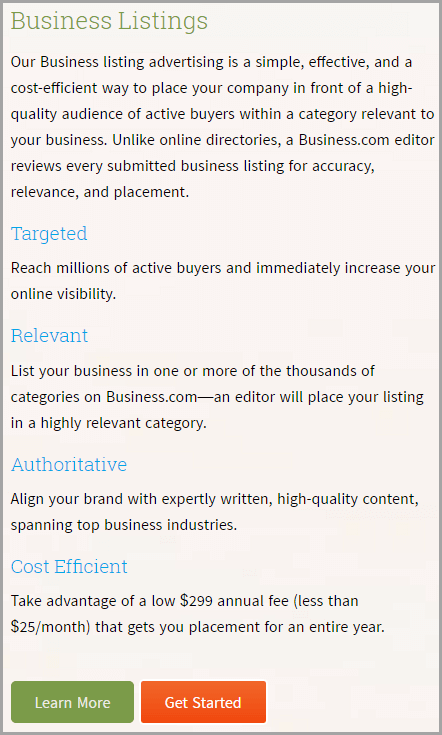
Continue to create quality content that people in your industry will want to link to, and use PPC and social media to promote your content.
Getting .EDU and .GOV links is more difficult, but this article will help.
Integrate with Google
Integrating your site with Google begins with creating an XML sitemap so the search engine’s robots can crawl and index your site properly. Some content management systems auto-generate sitemaps, but WordPress users need to use a plugin such as Yoast SEO to do so.

Once completed, make sure the sitemap can be accessed via a URL, then go to the Google Search Console and add your website.

Verify your site and select it. Then click “Site Configurations” and “Sitemaps” and add your site map.
Continue creating a Google presence by building a Google My Business profile…
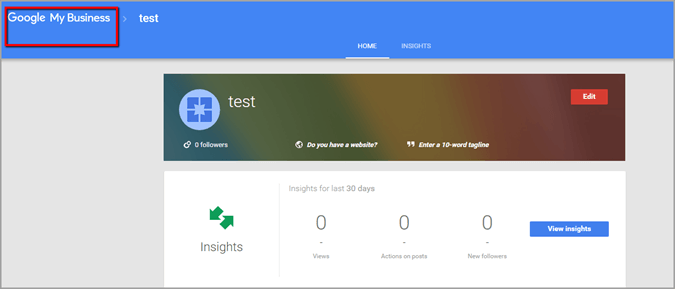
Finalise your plan for ranking in search engines by adding social media and customer reviews to your site. Google uses social cues for its rankings so this will help your site move up the search results. Plus, people are more likely to engage with a site that has positive reviews visible in a search.
Consider tools like Review Buddy and Testimonial Robot for adding reviews, and Shareaholic and LoginRadius for social media integration.
Conclusion
Ranking for competitive keywords might seem like an impossible task, but with the right strategy and some hard work it’s within your reach.
And it’s worth it…
People going to search engines for information isn’t a trend that is going to disappear tomorrow. In fact, it continues to grow as more of the world’s population access the internet via their mobile devices.
I won’t sit here and tell you that SEO is the one and only tactic you should use to generate traffic and leads for your business. However, it is an extremely important cog in a well balanced and diversified digital marketing strategy.
How do you fair when it comes to ranking for competitive keywords?
If SEO is a regular sticking point for your business and you are interested in driving MORE revenue, not just more traffic get in touch for a free Growth Session.
